ASUS at Computex 2016: The 10 Years of the Republic Of Gamers (ROG) Booth Tour
by Ian Cutress on June 22, 2016 8:00 AM ESTI wanted to touch on some of the non-ROG hardware in the ASUS Booth, some of which we haven’t seen before. First up is the TUF range, which ASUS uses as their hardware wearing, more physically demanding and higher warrantied product line. Typically we see one or two TUF motherboards each generation, with the Sabertooth variant in a camouflage design and the Mark S in white camo. At this point the Mark S doesn’t have the TUF branding, but it takes a lot of the aesthetic design – we reviewed the genesis model #0001 off the production line back in November 2014.
990FX Sabertooth R3.0
Despite AMD’s 990FX platform being nearly five years old, the FX processor line still represents AMD’s high performing processor lineup for consumers. Due to the age, most motherboard manufacturers issue the odd update now and again to refresh the line with some of the latest technologies. The 990FX Sabertooth has had two versions already, and at Computex we saw R3.0 with RGB LEDs, reinforced PCIe slots, M.2 integration, USB 3.1 Type-C, semi-transparent PCIe latches and a new variant of ASUS’ Q-LED.
Being part of the TUF family means that ASUS tends to over-engineer the board to cope is harsher environments. This means upgraded power delivery, combination heatsinks and that reinforced PCIe slot, but it also gets visual enhancements such as the color scheme and rear IO cover to maintain the look.
The rear panel comes with four USB 3.0 ports from the chipset as well as four USB 3.1 ports. These are from ASMedia ASM1142 controllers, with one for each pair of ports. One of these is USB Type-C, supporting the reversible USB connection standard now being seen on some smartphones.
One of the interesting things for me, however, was the adjustment of the Q-LEDs. ASUS’ system uses a series of LEDs that light up as the system turns on and configures itself for the hardware inside. As the hardware may have changed since the startup, or the quality of the hardware has changed over time, the system needs to ‘retrain’ its pathways to make sure it can support the data rates the BIOS tells it to. As the system checks different parts of itself in POST, the LEDs relating to CPU, DRAM, VGA, Booting and PWR light up in turn. If there is an issue, the LED that stays lit should show you which part has an issue.
Now normally the Q-LED layout was a small segment on the top right of the board, with some onboard text saying which LED did what. It would seem that for the R3.0, the Q-LEDs have made it on the chipset heatsink. I think this is a great idea, as it allows for a bigger font size and arguably more powerful/configurable LEDs next to a microcontroller. Ultimately I think the Q-LEDs should be nearer the bottom, just in-case a large GPU comes along and blocks the view.
Whether you think this is useful for a 990FX board in mid-2016 is up to you. ASUS seems to think so.
TUF Detective
Attached to the Z170 TUF motherboard was a tablet running the TUF Detective application. The idea here is that a user can see fan/temperature/voltage values on the fly, or control the system via the app. At present the tablet has to be connected to the motherboard, and we have seen something similar to this on ASUS Extreme motherboards and overclocking, however from the monitoring point of view this is an interesting angle. If ASUS combined this with a self-contained IPMI control chip similar to servers, and a WiFi/Bluetooth module that was separate, perhaps a user could control their system via WiFi rather than USB.


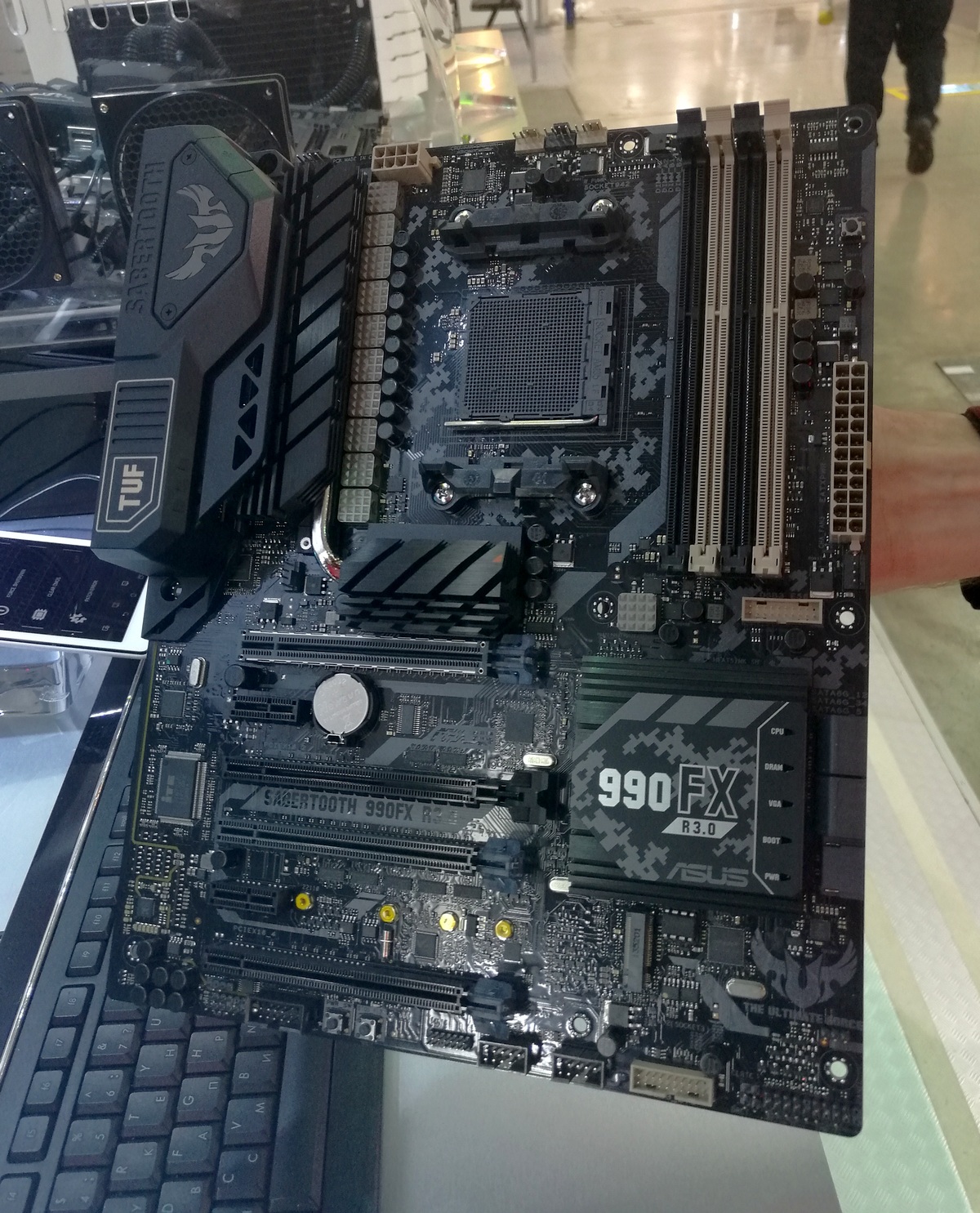
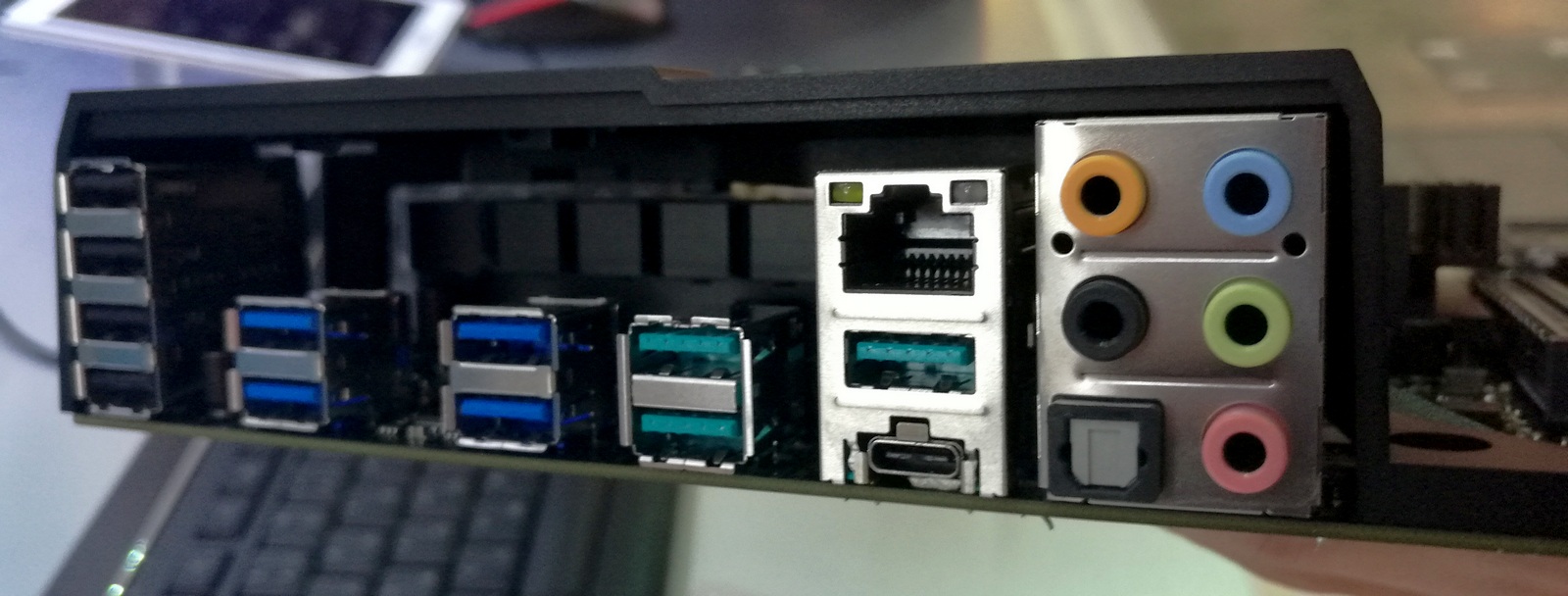
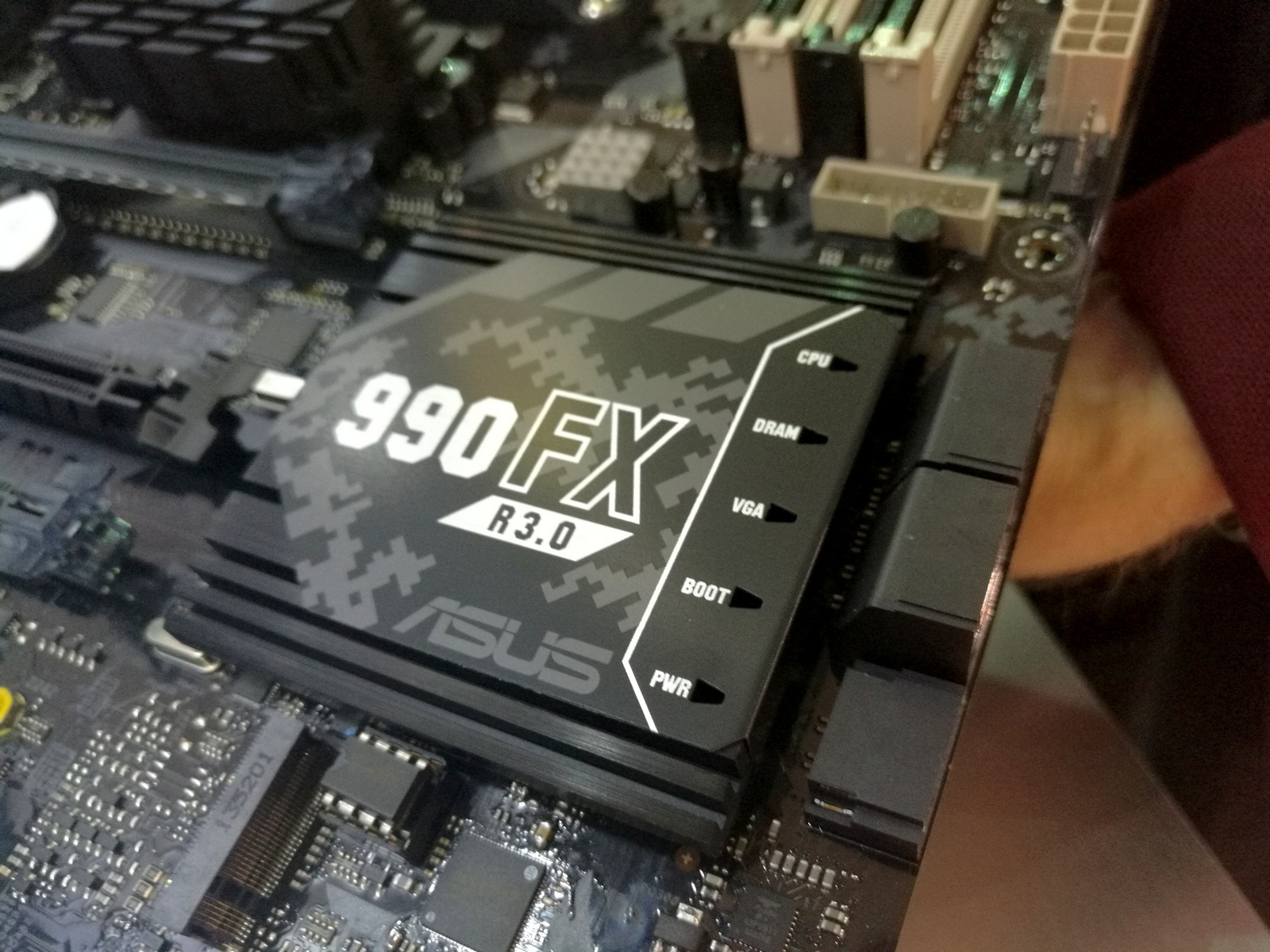
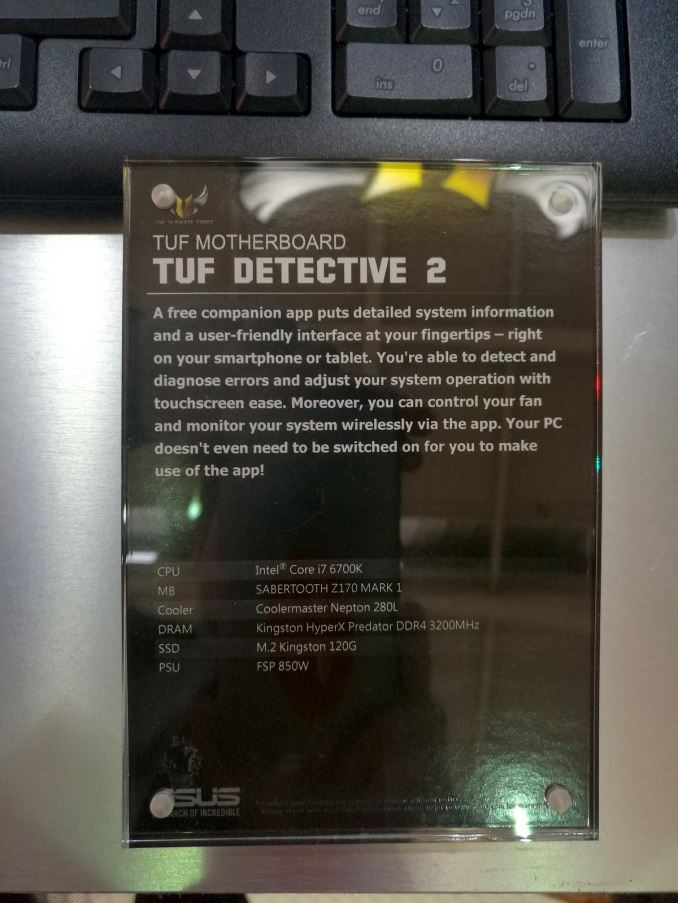
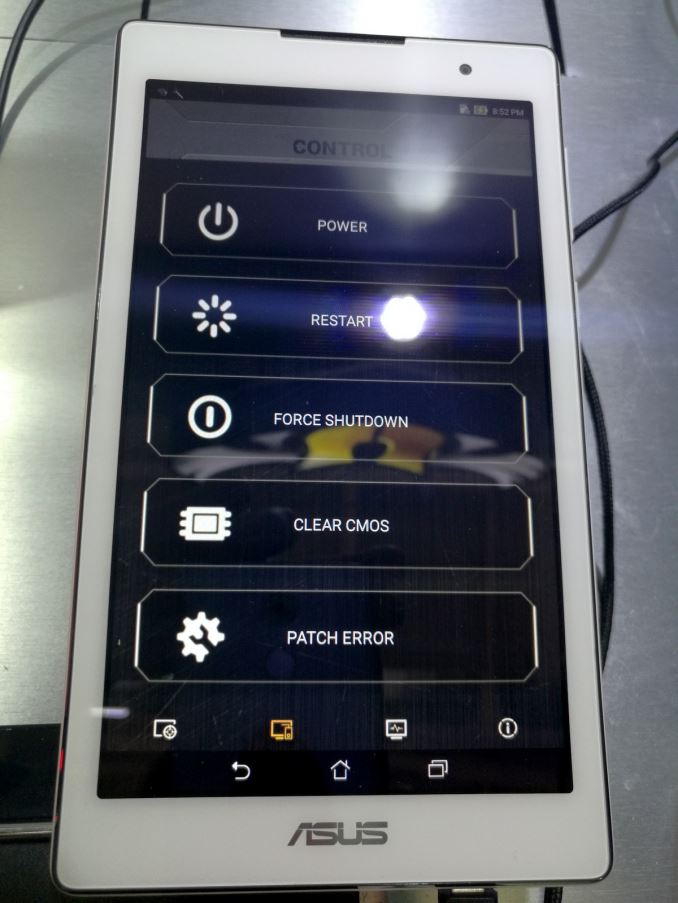








43 Comments
View All Comments
alphasquadron - Wednesday, June 22, 2016 - link
I used to think that too. I would think that the market for young kids who can afford such huge expensive machines would be quite small as it would it would compose of rich people and not middle class which is much larger market. But as companies make more crazy led shiny cases and even have ram modules that have lights and crap on them, I want to say that either they are just dumb and don't know how to sell stuff or that they have much more real live market data then I do and that these things actually are a good thing to make. I could never see it but maybe these things do provide a good revenue source for the company.Gastec - Wednesday, August 31, 2016 - link
I'm not sure that's the fact in North America. Not since the 15-30 years of age group queued for miles and waited for days to buy $500-600 iPhones.hechacker1 - Wednesday, June 22, 2016 - link
I went with another ATX case because I wanted a silent build, which includes AIO radiators for when you are actually using a Broadwell-E at 100%, along with powerful GPU. They can dump out a lot of heat.Right now my 6800k is using 45w at idle with a 4.3GHz overclock. That's according to the motherboard sensor on the Strix x99 Gaming that was mentioned in this article.
So while 45w isn't that much and can easily be handled by a HSF, at full tilt it's rated for 140w TDP (probably less because the 6800k is cut down).
Anyways, that's to say since I do VR with it, SLI really isn't a factor today and I use a single GPU. What ATX does allow is future further expansion via add in cards, and great and silent cooling. My whole rig has fans that are less than <1000 rpm at all times, and so it's almost always silent.
Bragabondio - Wednesday, June 22, 2016 - link
Nice rig heckhacker! Nowadays the components are getting more power efficient so I am planning on downgrading from 650W power supply to 550W one. As for silent build I am pretty sure I could make my rig as silent as I need it in mATX case (I am ready to go with minimum overclock to keep the noise down). In the eternal dilemma between firepower and mobility I prefer mobility (within a reason).BrokenCrayons - Thursday, June 23, 2016 - link
I'm continuing to use an ATX case for cooling, but the motherboard inside it is mATX since I finished my most recent upgrade. I briefly considered grabbing a smaller case, but it seemed like a waste of $30 to pick one up when there's nothing wrong with the old Lian Li tower on wheels from 2008 aside from the fact that it's got more space than I need right now.milkod2001 - Thursday, June 23, 2016 - link
Because it might be much easier to design full atx LGA 2011-v3 motherboard with all features enabled than micro/mini atx variant. I don't see that as a big issue though. You don't have to get monster case for that. Just get the smallest decent case for full atx mobo and have it sitting under table. Or don't go for LGA 2011-v3 get something simpler if you don't need all features if offers.fanofanand - Wednesday, June 22, 2016 - link
Nice work Ian, thanks for the info!madwolfa - Wednesday, June 22, 2016 - link
What's up with leather jackets?BrokenCrayons - Wednesday, June 22, 2016 - link
It's probably just attire the company's employees believe will appeal to people within their target market.iamkyle - Wednesday, June 22, 2016 - link
Of course, the x99 Edition 10 board doesn't come with 10GbE. But still commands the price premium.Looks like ASUS is all about money instead of delivering actual value.